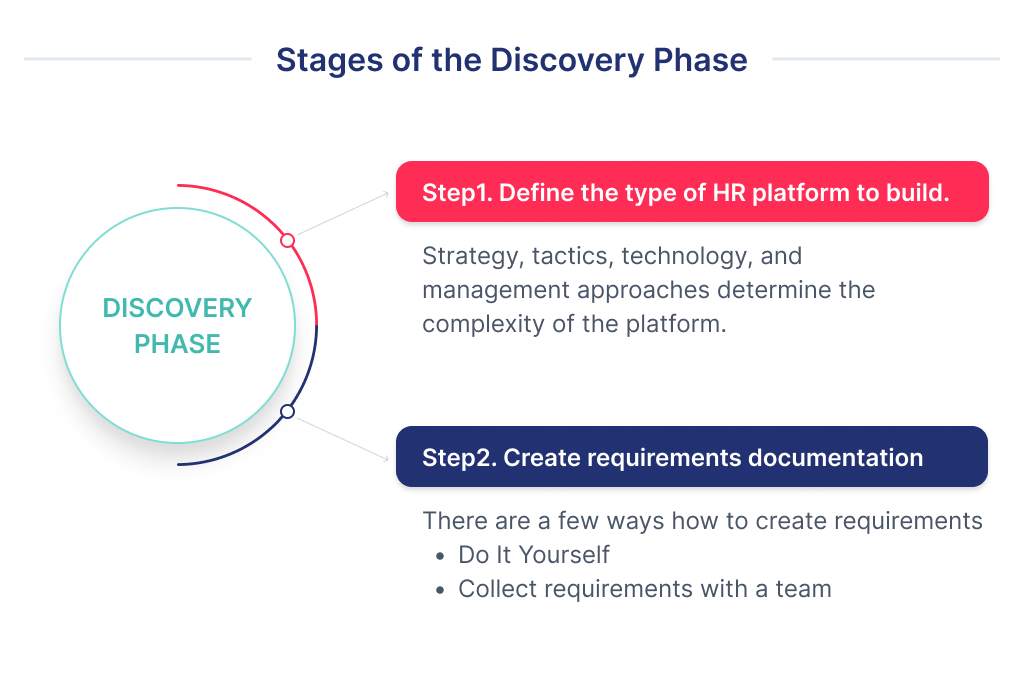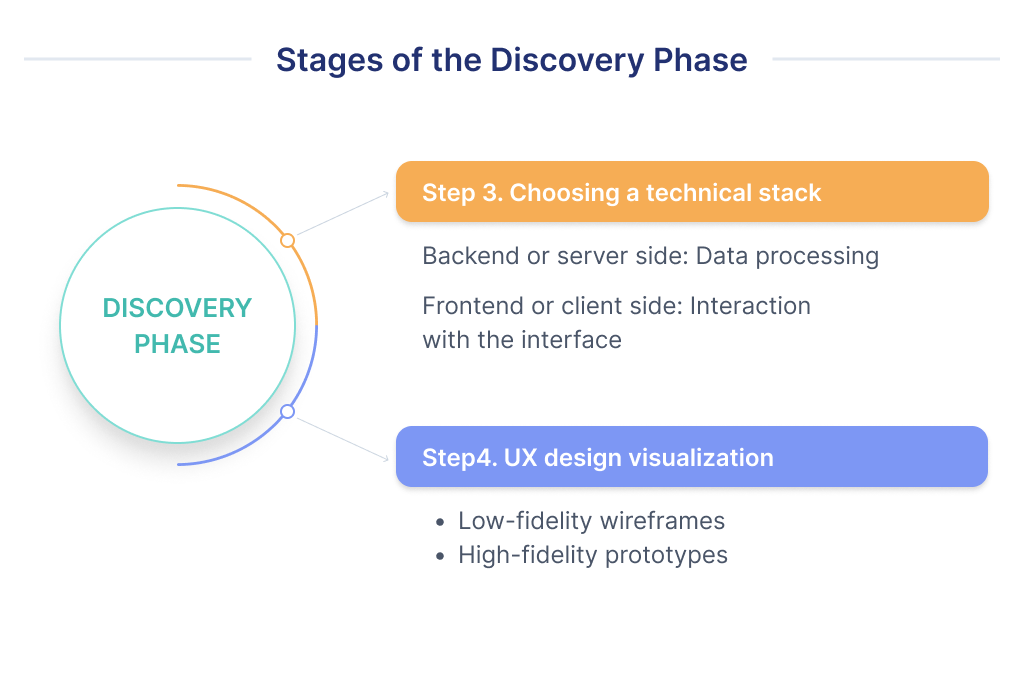
Interested in how much does it cost to develop a custom HR management system?
Here you’ll find the answers to the questions:
- What are the market conditions to launch an HRIS startup?
- How to develop your own HR app from scratch?
- How does the development process look like?
- Is it profitable to develop an HR management solution in-house or hire an external team?
- How to find the right development team?
We will also explore the main features of the HR solution and get an idea of the cost of its development process in different countries.
If you prefer visual to text, then go straight to the bonus infographic “How to create an HR app in 5 easy steps.”
Let’s move on!
Why Now Is the Best Time to Launch an HRMS Startup?
Two key factors make launching an HR startup in 2021 a good idea.
On the one hand, the trend towards globalization showed that remote is the future of any business, especially in the field of IT and software development.
We can take a look at these processes and HR functions as an example:
- Company’s performance management
- Employee performance tracking and payroll management
- Remote hiring process and talent management
On the other hand, the pandemic changed the way people work. The massive shift to the remote work model placed a significant demand on HR startups. How do we know?
- Ravish Agrawal, CEO at Able Jobs, revealed that less than 15% of their entry-level interviews with customers were online before the pandemic, but now it’s more than 75%.
- Regarding the digital touchpoint, less than 20% of companies used it before COVID, while now it’s more than 60%.
- HR departments started to aim at employee retention, which increased the need for employee engagement.
- According toUnleash, Global HR technology investments had deals of $100 million or more at the end of 2020 – one of the highest levels since 2017.
- According toPwC’s HR Technology Survey, in 2020, there were $148 billion of investments in HR solutions.
Now, let’s take a look at the details of the development process.
How to Build HR Management Software from Scratch?
The first thing you should remember about human capital management system design and development is that it requires time, effort, and money.
After all, you can consider this software like real estate – your private property. And you are in charge of its construction and arrangements.
But unlike real estate, investment in a startup can pay off a hundredfold in a short time. So it is better to take enough time to create a high-end product that your customers will love.
That’s why it is crucial to think through all the details, starting from the business analysis, design, software development, and testing stages.
The Discovery Phase
Among the various stages of software development for the HR team department, the discovery stage is fundamental.
The team identifies and analyzes requirements and business goals to propose a technical implementation, set project timelines, and estimate development costs.
As a founder, you should start by identifying your target audience and analyzing your competitors.
The goal here is to think through the concept of your own “betterness” instead of existing solutions.
And it is not only about other digital platforms but also about other non-digital ways to solve the same problem.
We have prepared a list of questions to help you in the research phase:
- Who is the primary target audience?
- What is the biggest problem the customer currently has?
- What have they done in the past to resolve this problem, what went well, and what do they want to change?
- What have they paid in the past to solve this problem?
- What is the ideal outcome they want to experience if the problem were perfectly solved?
The discovery phase involves several steps. Let’s take a closer look at each one.
1. Define What Type of HR HRMS Platform You Want to Build
Moreover, the vision, of course, determines the complexity of the future human resource management system.
The complexity of the platform directly determines the final cost of the development of your custom HR web or mobile application.
Among other options, evaluate the following software development opportunities:
- Recruiting-focused
- Onboarding-focused
- Performance-focused
- Talent-focused
- Training-focused
- Administrative-focused
- Workforce management-focused
- Employee management-focused
- Benefits administration-focused
As for examples of the recruiting-focused software, we can mention such companies as:
- Yello, which provides employee referrals, schedule automation, video interviewing features;
- Beamery, a British startup that is among the ten fastest-growing companies in the UK and specializes in self-styled recruitment marketing software for fast-growing companies;
- Avature, a platform for Global Talent Acquisition with more than 650 customers.
2. Prepare Requirements Documentation
Creating documentation is an essential step because the textual description of the project determines how it will work.
The purpose of the documentation phase is to prepare quality business and technical requirements. The technical ones include the design and the code requirements.
Based on the requirements file, the team will define what and how they have to build. And this will be a base for future estimations.
There are several ways to work with documentation. On the one hand, you can try to create the requirements yourself.
And on the other hand, what happens much more often, the team in cooperation with you will make the requirements.
The second option will be more development-friendly and streamline the creation of software solutions.

3. Define Tech Stack
The technology stack is a set of development tools, languages, and frameworks. It directly affects the user experience and overall performance of your future SaaS platform.
The choice of development technologies depends on the requirements documentation. There are a few things to understand.
There is the server-side, the backend, invisible to the end-user, where data processing occurs. And the client-side, the frontend, where the user interacts with the application interface in real-time.
The choice of development language depends entirely on the business goals. For startups, for example, rapid growth and scaling are critical.
But other companies have other goals. Some even work with legacy languages, so-called legacy code.
4. UX Design of a custom HRMS
The UX design visualizes the first workflow of how your future application will work. It is based on the mix of your vision, user research, and documentation.
The more detailed preparatory work you and your team do, the more valuable the business logic of the future product will be in the output.
The UX designer’s tasks in this stage include:
- User journey. This step is about planning the screens that the users will need to achieve their goal.
- Layout and arrangement of information. This step is about building a flowchart or mindmap (site map or application).
- Low-fidelity wireframes. Creating very rough drafts of the interface
- High-fidelity prototypes. Elaboration of more detailed, with a grid and typography, but still black-and-white drafts of interface functionality and making it clickable.
In this way, users get an application where everything is laid out while customers receive a product that can be rapidly developed.
After the discovery phase, the development phase begins.

The Development and Testing Stage
The development of your custom HR system begins with the Minimum Viable Product. An MVP is a common approach in startup development.
In a nutshell, it is the development of the core HR features of your project to test the viability of your idea or business model. An MVP consists of a minimal set of hypotheses to test.
Meanwhile, the product could contain a few MVPs, or a few core features, that deliver the complex value to the final user.
We would like to share an actual case study on the proper use of MVP in product development.
A few years back, we developed HR software for Blue Academy. It’s a Germany-based HR startup.
Then we faced the classic task of developing an MVP: to test the idea’s viability quickly in the real market.
Together with the founders, we went all the way from creating documentation and development of the MVP to the fundraising of the investment round A.
If you’re interested in finding out more details, feel free to check the case study.
Meanwhile, let’s get back to the core features you need to include in the MVP development phase of the HR application.
Read more about hr software development here.

























